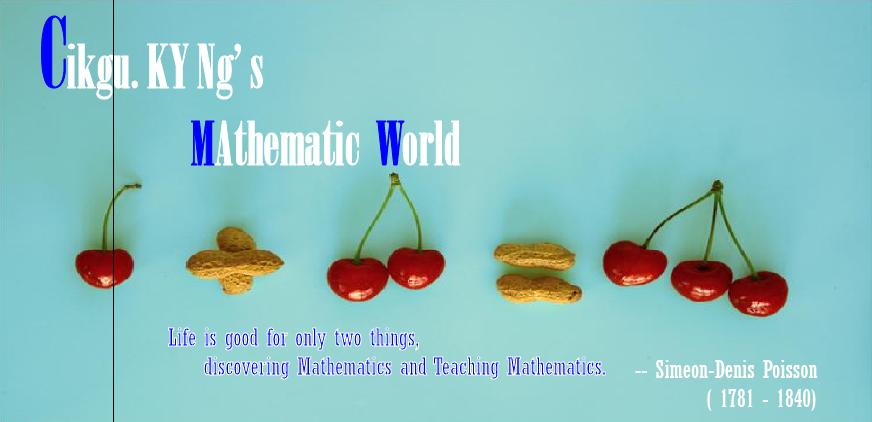How to teach and let the pupils remember all the multiply table with effective way?
Let see some advice to let children have a effective way of learning:
1.Make sure you hav
e the time to study with your child, and that they are not tired or preoccupied with other things.
2.Reward with fun, joy and your and their appreciation of learning -- not money or much material, to not spoil their love of learning. Of course, the usual snacks, drinks and such are great.
3.Ask your child to bring you their math book, so you can see exactly what they are studying, and the teaching method used in school.
4.Study "only" one or two rows of the table each time.
- Don't skip around at first.
5.Have a number line handy showing the numbers 0 through 100 for finding the pattern of each kind of multiples of any factor.
6.Point out that each consecutive multiple is separated by a certain number of spaces or boxes, for the answers... Like ask: "How many spaces separate the 3's?" Answer: That would be 3; so that is every third number on the line.
- Then when you are working on the multiples of 4, ask the child "Please count across the number line using four, and circle all the multiples of 4."
7.Show how each multiple in a row can be found by repeatedly adding the same number. Multiplying is based on adding; but it is not adding. For example, the multiples of 3 ---6, 9, 12, 15, 18, etc--- can be found by starting at 6 and repeatedly adding 3 to each number to get the next one... but don't do it all day long.
8.Show your child that the first row matches the first column, the second row matches the second column, etc. This means that the order of the number does not affect the answer. 3 x 7 = 21 and 7 x 3 = 21.
9.Discuss patterns in the whole chart. For example:
- All the multiples of ten end in zero.
- All the multiples of 5 end in either 5 or 0 and are half as large as the multiples of ten.
- Some numbers, like 24, are listed under several different factors: 2 x 12 = 24, 3 x 8 = 24, 4 x 6 = 24
- Special facts: The diagonal line between 4 and 100 that splits the table has the same two factors: 2 x 2, 3 x 3, ... and so:
- 2 x 2 = 4, 3 x 3 = 9, 4 x 4 = 16, 5 x 5 = 25, 6 x 6 = 36, 7 x 7 = 49, 8 x 8 = 64, 9 x 9 = 81, 10 x 10 = 100, and you can do 11 x 11 = 121 and 12 x 12 = 144 as bonus... advanced
10.Learn those as the "Squares of Numbers". The square of 2 is 4; the square of 3 is 9; the square of 4 is 16 -- etc.: for 2 through 10 (up to 12 sometimes).
_________________________________________________________________________________
Children learning definitely need involve both teacher and parents.
Let us work together to build up ours chilren!!





